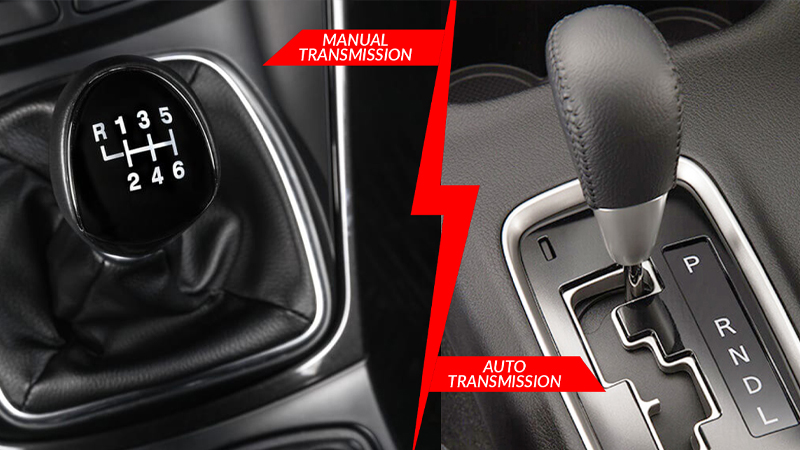
Potresti esserti chiesto perché lo scooter da 100 cc offre meno chilometraggio della bici con cambio manuale da 100 cc. Pensaci dove uno scooter da 100 cc restituisce un chilometraggio vicino a 40-50 Kmpl, una motocicletta media da 100 cc fornisce un chilometraggio superiore a 60 Kmpl. La risposta a questa domanda sta nella trasmissione utilizzata in cui gli scooter utilizzano la trasmissione CVT automatica, mentre le motociclette utilizzano una trasmissione manuale a 4 o 5 velocità adeguata. Discuteremo il motivo alla base di questo in questo articolo.
Cominciamo con lo scopo di un cambio. Il motore di un veicolo funziona a una determinata velocità di rotazione o giri al minuto (RPM). La velocità di rotazione richiesta delle ruote è solitamente molto inferiore a quella. Ad esempio, un tipico motore di una bici da 100 cc può girare fino a 6000 giri/min, ma se le ruote (18 pollici di diametro) di una tipica bici da 100 cc si muovono a quella velocità, raggiungerebbe una velocità di 518 km/h!
Quindi fondamentalmente il cambio è il meccanismo intermedio che consente al motore e alle ruote di funzionare a regimi diversi.
Gli scooter utilizzano un sistema chiamato Continuously Variable Transmission (CVT), che nella sua forma più semplice è solo un sistema di pulegge coniche con cinghie che consente la regolazione automatica della velocità. La bici da 100 cc invece ha un cambio manuale, che richiede di selezionare manualmente un rapporto di trasmissione ideale per la velocità data. Di solito le bici hanno 5 rapporti di velocità tra cui scegliere al giorno d'oggi e sono quindi chiamate cambi a 5 velocità.
Il risparmio di carburante dipende dal tuo numero di giri. Più basso è il numero di giri, migliore è il risparmio di carburante. Le bici con le marce ci permettono di passare a marce più alte e così facendo i giri diminuiscono. A una data velocità (diciamo 40 km/h), quando in marcia più alta (4a marcia), la bici ha giri minori rispetto a quella che va alla stessa velocità (40 km/h) con una marcia più bassa (3a). In uno scooter gearless, i giri/min continuano ad aumentare continuamente. Quindi ha un minor risparmio di carburante.
Inoltre, un altro importante contributo a questo è il fatto che gli scooter gearless hanno una frizione centrifuga. In un tale sistema, all'aumentare della velocità, aumenta la forza centrifuga che agisce sulla frizione. Pertanto, rimane sempre parzialmente impegnato (staccato dall'albero di ingresso). Ciò si traduce in una perdita di potenza e quindi in un minor risparmio di carburante.
La frizione non è controllata dal pilota, funziona automaticamente e anche la frizione è un'unità piuttosto inefficiente che trae la sua potenza nientemeno che dal motore. Ciò si traduce in una maggiore perdita di potenza e per compensare in termini di prestazioni, l'efficienza dello scooter subisce un duro colpo.
Ma alla maggior parte dei consumatori non importa perché la comodità di non cambiare marcia manualmente sembra un giusto compromesso. Tuttavia, le trasmissioni automatiche stanno diventando più high tech mentre parliamo e molto presto questo
You might have wondered why 100cc scooter gives less mileage than 100cc manual transmission bike. Think about it where a 100cc scooter returns mileage near 40-50 Kmpl, an average 100cc motorcycle provides mileage over 60 Kmpl. The answer to this question lies in the transmission used where the scooters use automatic CVT transmission, while motorcycles use a proper 4 or 5 speed manual transmission.We will discuss about the reason behind this in this article.
Lets start with the purpose of a gearbox. The engine of a vehicle runs at a certain rotary speed or revolutions per minute ( RPM ). The required speed of revolution of the wheels is usually much less than that. For example, a typical 100cc bike engine can rev upto 6000rpm, but if the wheels ( 18 inch dia ) of a typical 100cc bike move at that speed, it would reach a velocity of 518 kmph!
So basically the gearbox is the intermediate mechanism which allows the engine and wheels to run at different rpm.
The scootys use a system called a Continuously Variable Transmission ( CVT ), which in its simplest form is just a a cone pulley system with belts which allows for automatic adjustment of speed. The 100cc bike on the other hand has a manual gearbox, which requires you to manually select an ideal gear ratio for the given speed. Usually bikes have 5 gear speed ratios to choose from nowadays and they are thus called 5 speed gearboxes.
Fuel economy depends on your RPM. The lower the rpm, the better fuel economy. Bikes with gears allow us to shift into higher gears and by doing so, the rpms decrease.At a given speed (say 40kmph), when in higher gear (4th gear), the bike has lesser rpms as compared to it going at same speed (40kmph) in a lower gear (3rd).In a gearless scooter, the rpms just keep building up continuously. So it has lesser fuel economy.
Also, another major contributor to this is the fact that gearless scooters have a centrifugal clutch. In such a system, as the speed is building up, the centrifugal force acting on the clutch increases. Thus, it always remains partially engaged (detached from the input shaft). This translates into power loss and thus lesser fuel economy.
The clutch is not controlled by the rider, it works automatically, and the clutch is also a pretty inefficient unit which draws its power from none other than the engine. This results in more loss of power and to make that up in terms of performance, the efficiency of the scooter takes a hit.
But most consumers don't mind because of the convenience of not shifting gears manually seems a fair trade-off. However, automatic transmissions are getting more high tech as we speak, and very soon this

- Log in to post comments